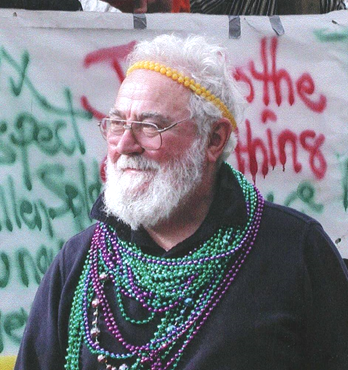Emeritus Professor and geography alumnus, Denys Brunsden is the Founder of the Jurassic Coast World Heritage Site in southern England. Now retired, 85 year-old geomorphologist has written this blog on his academic and professional journey. Professor Brunsden hopes to inspire current students to “keep all your windows open” because you never know where your geography degree could take you.
I have decided to write this partly as a CV so that new students can know who I am and also read about part of my life (that is an 85-year old’s vanity). I want to do this because it might indicate where a career in geography at King’s might lead you if you keep all your windows open and look at what might blow in.
Before becoming a professional geographer
I was born in Devon in 1936. My geography life began when I won a State Scholarship at Torquay Grammar School. I then did National Service in the Royal Air Force (RAF), where I learnt the great skill of air photo interpretation, which was to underpin much of my subsequent career. From the RAF, I studied Geography at King’s College London from 1956 – 1959, and remained there until I retired four decades later.
My geomorphical journey
Following my degree, I was given a tutorial studentship at King’s, teaching 6 hours a week. At the same time, I began my PhD on the landscape of Dartmoor under Professor Sidney Wooldridge.
In 1965, I visited New Zealand. Here, a formative event occurred. I was exposed to a very different environment and geomorphological activity. A geomorphological dream. I also gained a great deal from a spell in Louisiana and the Mississippi Delta.
Coming home to King’s, I studied mass movements, as a process, on the landslides of the Dorset Coast and, with John Thornes from the London School of Economics, worked on the fundamental concepts such as landscape sensitivity and change, and the principles of the subject.
I then concentrated on applied geomorphology because I believed that we should try to improve the way in which the resources of the planet are used and developed. Subsequently I worked on projects all over the world – 37 countries, starting a company called Geomorphological Services Ltd. These projects included finding the safest route of the Dharan-Dhankuta Highway in Nepal, the landslides of the Karakorum Highway in Pakistan, the Ok Tedi gold mine in Papua New Guinea, the Kotmale Dam in Sri Lanka, the stability of the Nile Delta, the bathymetry of the landslides on the floor of the Caspian Sea etc.
It might be asked by a current student how this wide range of studies was possible for a geographical geomorphologist. It was because we studied the process mechanics, physics and chemistry in great depth and were able to understand such subjects as soil and rock mechanics as well as good structural and lithological geology. In my day, we were taught how to physically solve some of the problems. No stochastic and models guesses for us!
What do I do now in my dotage?
After retirement I was appointed Chairperson of the Dorset Coast Forum which worked very hard to create the Jurassic Coast.
Old, I am now the first Patron of the Jurassic Coast Trust, which manages the site today. It remains the only natural World Heritage Site in England and Wales. The job is vast because it means coordinating the activities of over a hundred ‘stakeholders’ who use the coast.
I use a lifetime’s research information gained at King’s to contribute to this, and I suppose that is the message to you, what you are learning now will still be with you and useful in 60 years’ time. Keep your windows wide open.
If you’d like to learn more about Professor Denys Brunsden life, check out this Youtube video: An interview with Professor Denys Brunsden ‘Father of the Jurassic Coast’
